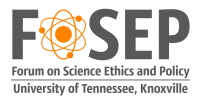By Humaira Taz
FOSEP’s second Slack discussion focused on “Clean Coal”. For those of you who are not familiar with the concept: “”Clean coal technology” describes a new generation of energy processes that sharply reduce air emissions and other pollutants from coal-burning power plants.” (Clean Coal Technology). The technology encompasses methods to “reduce sulfur, nitrogen and mercury pollutants” from power plants, improve the overall system efficiency, and capture and store carbon to reduce green house gas emissions. The government’s effort towards promoting clean coal technology is reflected in the amount of grants provided to the Petra Nova facility ($190 million) and the Kemper power plant ($1.6 billion out of which $270 million is from Department of Energy).
Personally, I was surprised at how much funding went into coal R&D, but given that many states are economically supported by the coal industry, it makes sense. My first thought was is it worth it? Is coal economically feasible? We discussed that it is not. It was pointed out that natural gas is overtaking coal in terms of economic feasibility even when coal power plants are not doing carbon sequestration. Natural gas is cheaper than coal, which is why many coal power plants are switching to natural gas.
One FOSEP member added that carbon sequestration tends to reduce the system efficiency, but the bigger problem is in the long run. “If we can figure out a way to make coal combustion clean, then we can utilize the decades or even centuries worth of coal reserves still in the ground.”
This got me thinking that if clean coal and renewable energy sources are at the same level of R&D, then why does the government focus so much on coal? One answer is that renewable sources do not provide base load power. The development in energy storage systems is still not enough to store and supply energy from renewables on a large scale.
The second answer is the concern about work force who have invested their whole lives in the coal industry. “[These people] have built communities in areas that don’t have much else. And it’s not really a transitional skill into something else. We need a way to support or re educate these people (who have helped us become the thriving energy economy we are) and help them transition out of a dying industry and help them stay in their communities”, another group member explained.
Therefore as technology progresses, retraining these people to transition into other industries becomes more and more important. So far, we know of one non-profit organization, “Bit Source“, that is helping unemployed workers in the coal energy learn to program and be software developers. It was pointed out that retraining can have direct implications on energy policy too. We discussed that a retraining program could be put in place that help coal miners become technicians for PV technologies. If Alternative energy continues to grow at this pace, workers will be needed. Why not source them from people who were affected by the transition?
To focus back on clean coal, the discussion steered into whether CO2 sequestration can lead to induced seismic activity. I read about two methods for sequestering CO2 – one is to dissolve the gas in saline aquifers that can be found abundantly in nature, the other is to have the CO2 adsorbed into coal seams. Personally it wasn’t intuitive to me whether either of these processes would induce any seismic activities. However, it was mentioned that seismic activities would heavily depend on CO2 injection rates.
With the government being so heavily focused on coal, it raised the question of how much of the economy actually depends on coal. Turns out that the coal industry contributes to less than 0.3% of the US GDP. The Washington Post made a hilarious comparison that the coal industry employs fewer people than Arby’s!
Given the employment numbers for the different industries, why does the death of the coal industry seem so detrimental to our economy? One FOSEP member mentioned that it might be a localization issue. Coal mines are so localized and concentrated in certain regions that when a they shut down, entire towns go under the economy. When media covers the topic it looks like an economical disaster to the general public. “[It’s] interesting to think about the role the media is playing in the way we think about coal…and the power of narrative vs facts”, she concluded.
And that brought a very important issue into focus: as scientists, we must know how to communicate with the general public. Scientists live by numbers, and while that is vital for what we do, it might not be the best approach to explain scientific issues to and raise awareness among the general public.

